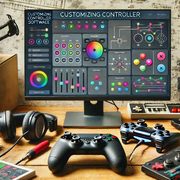Maximizing every website or application depends on an awareness of user behavior. Though they measure clicks, scrolls, and page views, traditional website analytics systems cannot understand how visitors interact with the interface. This is where systems for console controller mapping—like inputMapper—find applications.
 Users of console controller mapping software can alter how their controllers interact with PC games. Customizing control schemes and remapping buttons lets gamers adapt their experience to their tastes.
Users of console controller mapping software can alter how their controllers interact with PC games. Customizing control schemes and remapping buttons lets gamers adapt their experience to their tastes.
How therefore does controller mapping relate to traffic metrics for websites and apps? Here is the bridge:
When gamers turn to controller mapping software for a particular website or app, it can point to dissatisfaction with the default settings. Examining which buttons are remapped helps one find places where the user interface might be awkward or confusing.
Contrarily, controller mapping can also accentuate very interesting elements. If many users of a certain mini-game or interactive piece on your website or app are mapping controls, this indicates that this function is appealing to players and merits more research.
Users’ chosen control systems might be rather revealed by the way they map their controllers. Refining the default controls for a more user-friendly interface can be accomplished with this knowledge.
Examining controller mapping data has advantages beyond simple user interface improvement:
Understanding how gamers with impairments map their controllers allows developers to create more accessible experiences.
Controller mapping data can help you understand how consumers use your website or app across several platforms, including PCs with controllers or mobile devices.
By means of trend analysis of controller mapping over time, one can expose variations in user engagement.
A rapid increase in remapping activity could point to a recent update bringing control problems.
Though seeming unrelated to website and app traffic analytics, console controller mapping solutions provide a useful look into user behavior. Deeper understanding of user preferences, opportunities for development, and finally a more interesting and user-friendly experience can all come from examining how users interact with your platform via their controllers.